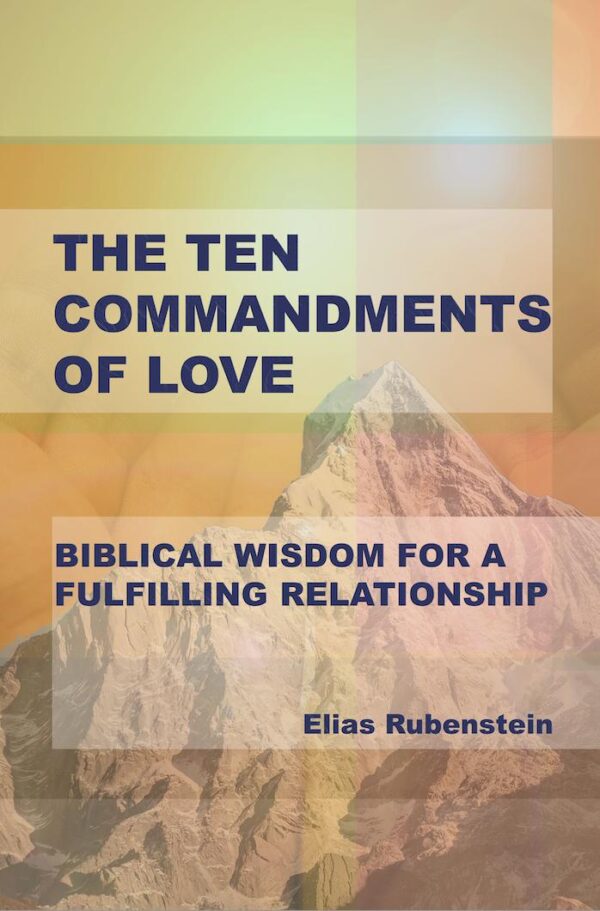The Ten Commandments of Love: Biblical Wisdom for a Fulfilling Relationship
By Dr. Elias Rubenstein
EXCERPT
Since most readers of this book live in the West, it’s important to highlight the key differences between the spiritual paths of the East and the West in the preface. These differences are rooted in lifestyle and cultural background. At first glance, the content of this book might seem irrelevant to someone from the East. It’s specifically written for people from the Western cultural context, focusing on the traditions of the West. When we compare the spiritual paths of East and West, the differences are clear. In the East, a spiritual person often lives in an ashram, surrounded by like-minded individuals, away from the distractions and struggles of everyday life. In the West, however, the student lives within a busy world of work, family, friends, and social commitments. In the East, vegetarianism is a requirement, whereas in the West, eating meat is part of many religious celebrations, like the Jewish Passover. There are also differences when it comes to alcohol. In the East, drinking alcohol is strictly forbidden and seen as a vice, while in the West, alcoholic beverages are even consumed during religious rituals, such as the Christian Eucharist.
One of the biggest differences is how sexuality is viewed. In the East, sexual activity is forbidden, and those on a spiritual path practice strict celibacy. In the West, however, marriage and having children are central to daily life and seen as desirable goals. Sexuality plays a significant role in this. Furthermore, in the West, sexual union is often associated with the holy day of the Sabbath. These are just a few of the visible differences. A deeper look reveals that the two paths can be seen as different stages of the sun’s journey. The sun has always been a symbol of spiritual awakening, and the term “light” is closely tied to enlightenment. In the East, the sun rises, while in the West, it sets. The Eastern path is like the sunrise of the soul, while the Western path resembles the sunset.
The sunrise is different from the sunset, just as day is different from night. It’s the same sun, but the experiences are very different. At sunrise, light emerges from darkness. At sunset, light already exists before the sun sets. Western mysteries focus on life and death, which is why the mysteries of death are treated more directly.
This is especially evident in Christian mysticism, where crucifixion and resurrection are central symbols. Even in mystical traditions like the Martinists, Freemasons, and Rosicrucians, these symbols are preserved, illustrating the immortality of the soul and the divine purpose of humanity. Western tradition also involves a conscious engagement with the material world. In contrast, the East sees the material world as an illusion to escape from. In the West, the focus is on the redemption of matter, which requires a different approach.
Table of Contents
PREFACE
INTRODUCTION
PRAYER
1. COMMANDMENT
2. COMMANDMENT
3. COMMANDMENT
4. COMMANDMENT
5. COMMANDMENT
6. COMMANDMENT
7. COMMANDMENT
8. COMMANDMENT
9. COMMANDMENT
10. COMMANDMENT
EPILOGUE
